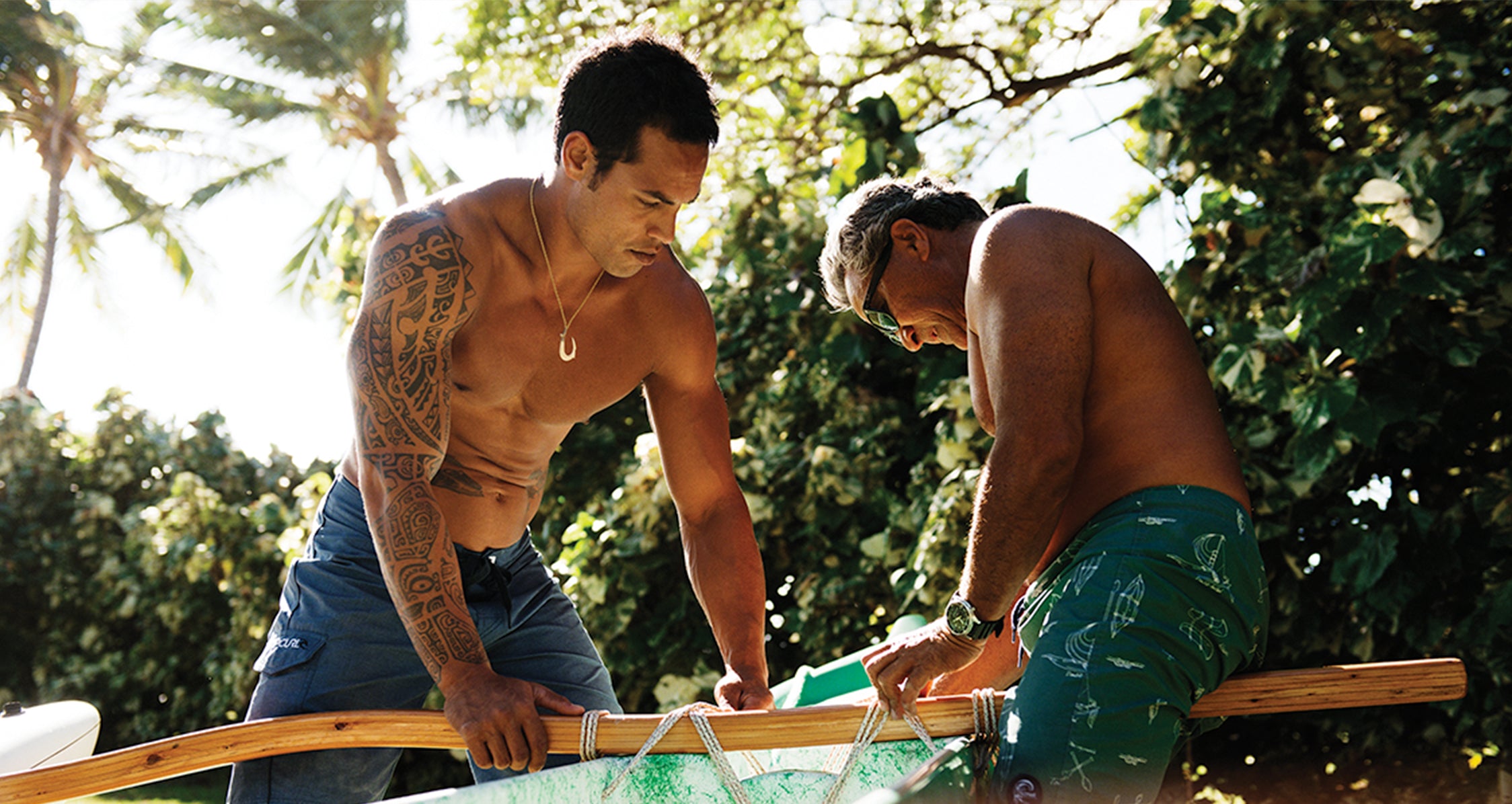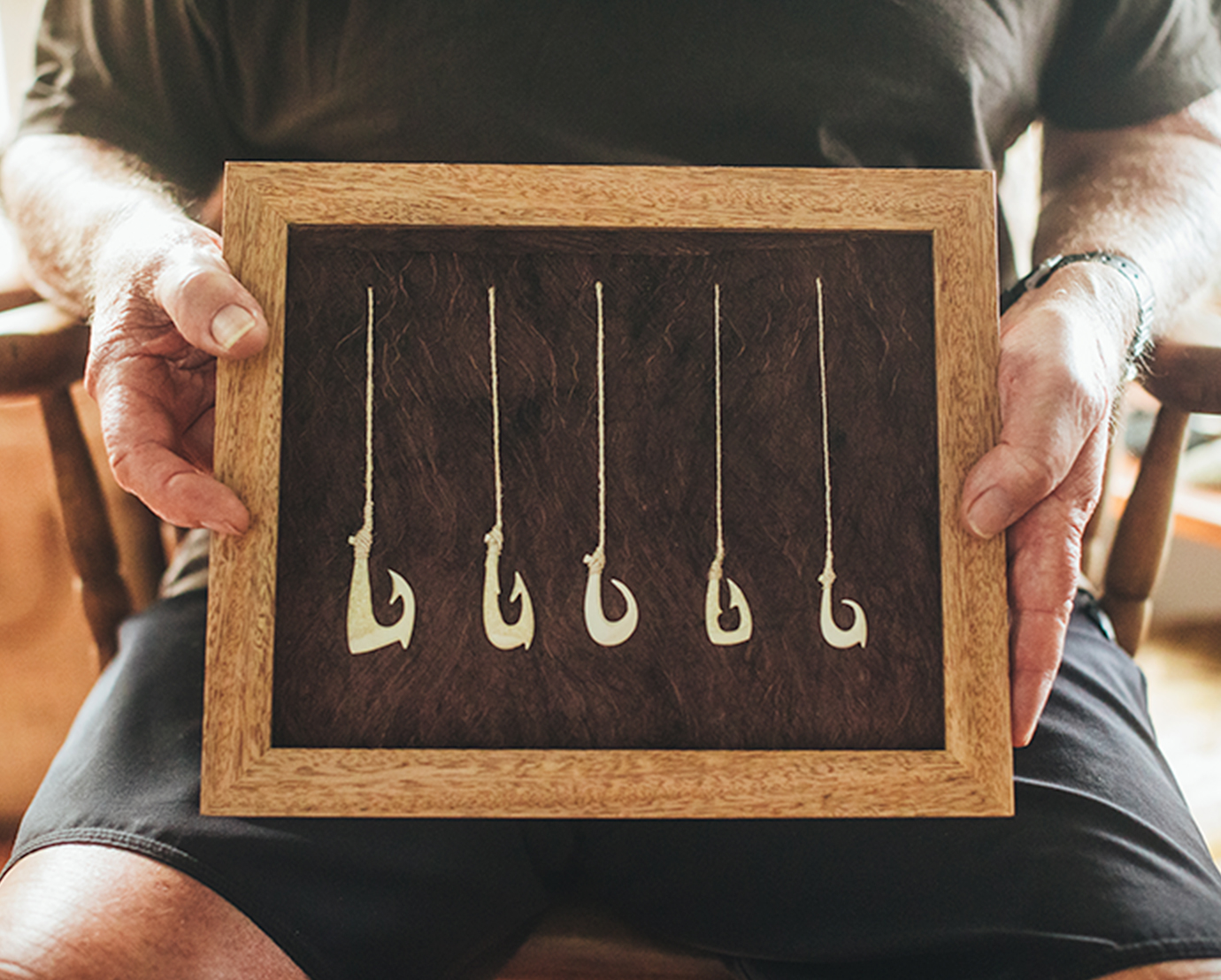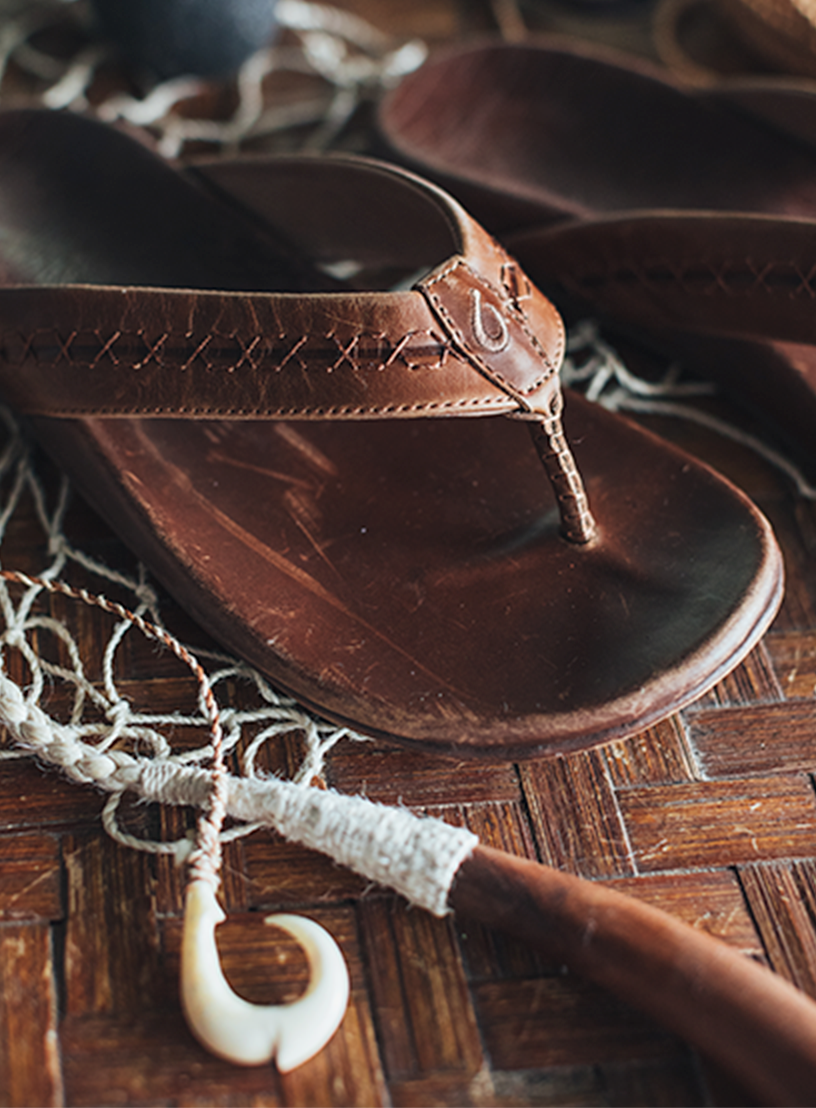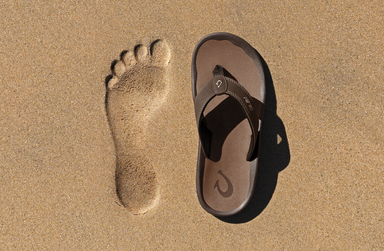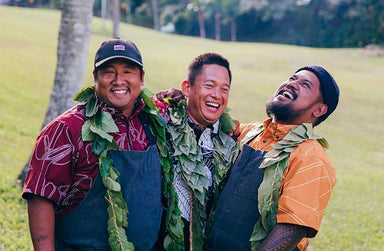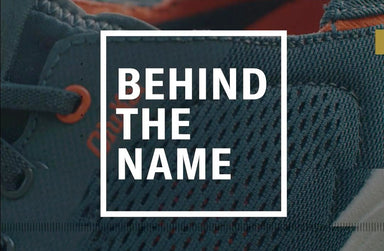The Meaning of Makau
Regarded as a symbol for safe passage over water, the makau, or fishhook, brings good fortune and strength to those who wear it. Also used as OluKai’s logo, the makau has held deep cultural significance in Hawai’i and throughout the Polynesian Triangle for over a millennium. Traditionally carved from bone, wood, stone and coral, different makau were crafted to catch every single type of fish and sea creature; a craft which was often passed down through generations.
Some makau were prized so highly, that they were thought to possess mana (celestial powers) and were hidden in gourds. Even in Hawaiian lore, the god Māui had a makau called Mānaiakalani that he used to try and hook all of the islands together to unite them. This same sentiment of unity still rings true today in Hawai‘i, as the makau remains a symbol of humans’ connection with the sea, its creatures and the fragile balance of life on the Islands.
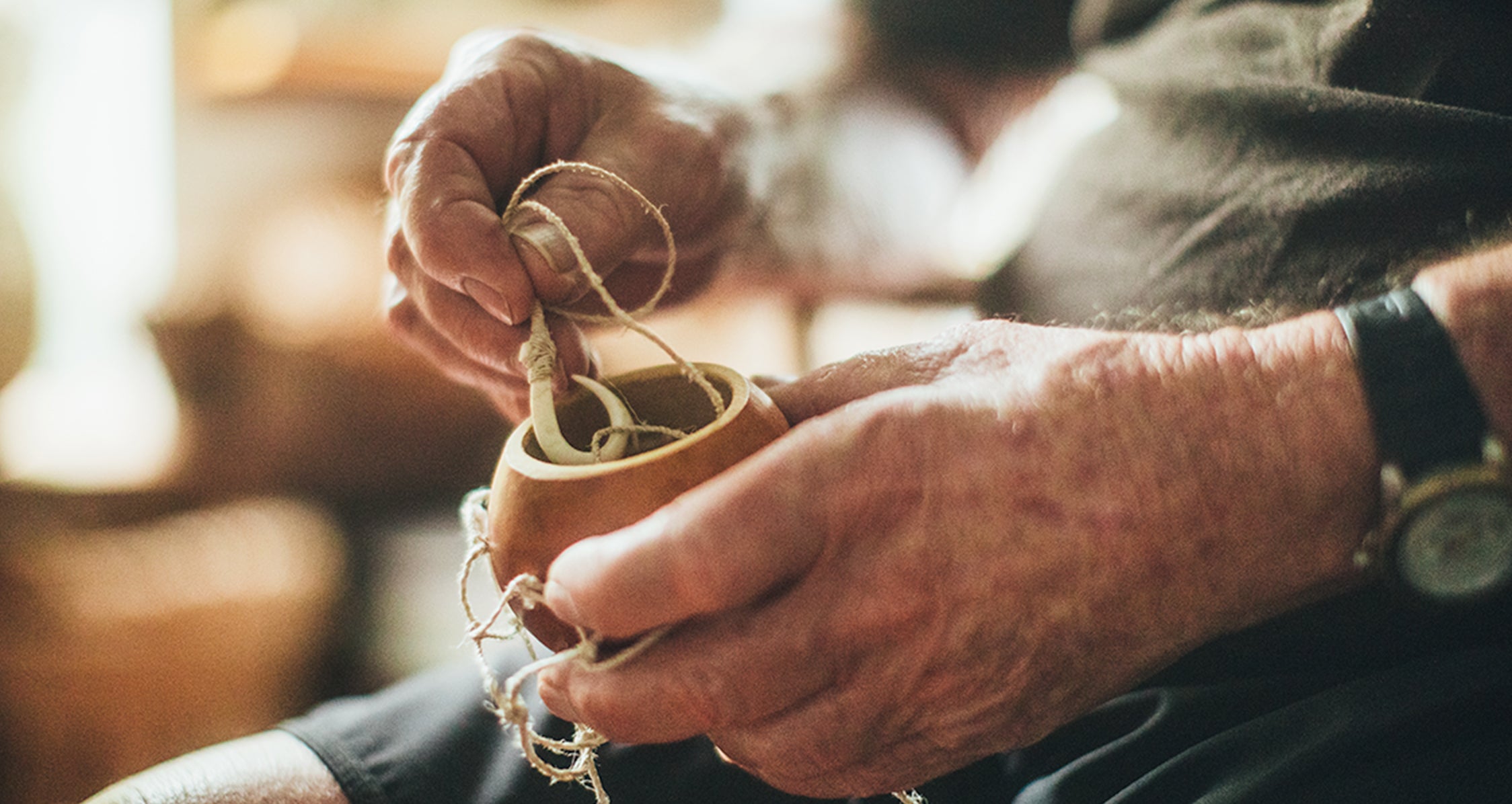
For the past four decades, artist and craftsman Gary Eoff has been handcrafting detailed Native Hawaiian artifacts—gourds (ipu), fish hooks (makau), basket fish traps (hina‘i) and fishing lures—from his home in Kona on Hawai‘i Island. Inspired by the voyaging traditions of early Hawaiian culture, their use of natural materials, and the aesthetics of their meaningful artwork, he creates authentic, museum-quality Hawaiian implements and artifacts while staying true to the materials and processes used by Hawaiian artisans from centuries ago.
“By rediscovering the traditional practices and skills of our ancestors, we will protect the land and ocean resources for our future,” says Gary Eoff. “I’m inspired by the high level of aesthetics, intricate techniques, expert craftsmanship, and use of natural materials in traditional Hawaiian cultural practices.”
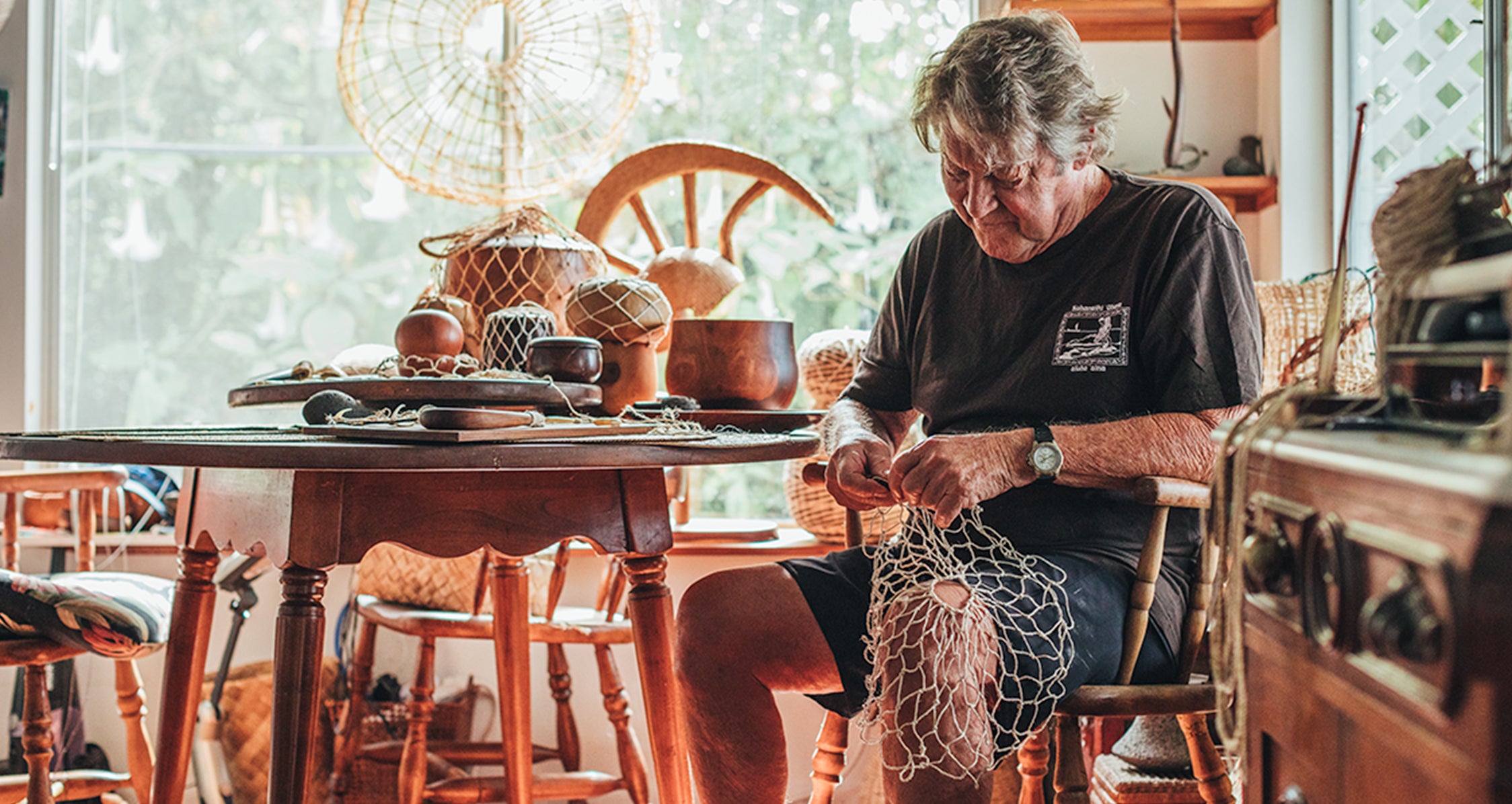
Gary’s traditional Hawaiian fish hooks—the materials, construction, and attention to detail—are an important source for perpetuating this important and wise indigenous knowledge. The octopus lure, which resembles a long, curved canine tooth, preys upon the octopus’ instinct to grab and hold onto the object, so that the angler can pull the octopus off the reef and into the boat. Many fish hooks were made using two pieces lashed together, which created a stronger hook for securing bigger fish. Furthermore, materials like turtle shells were sought after for their strength and flexibility once crafted into a fish hook. Gary even grows his own gourds and other Hawaiian plants for cordage and dye, so that his work is the best possible replica of the traditional fish hook, offering a steward of the knowledge found within.
Through the rediscovery of these traditional Hawaiian practices and skills, Gary hopes to protect Hawai‘i’s land and ocean resources for generations to come.
